Jiangnan's classical gardens are portals to the past, in which the echoes of yesterday are alive and growing, Yang Yang reports.
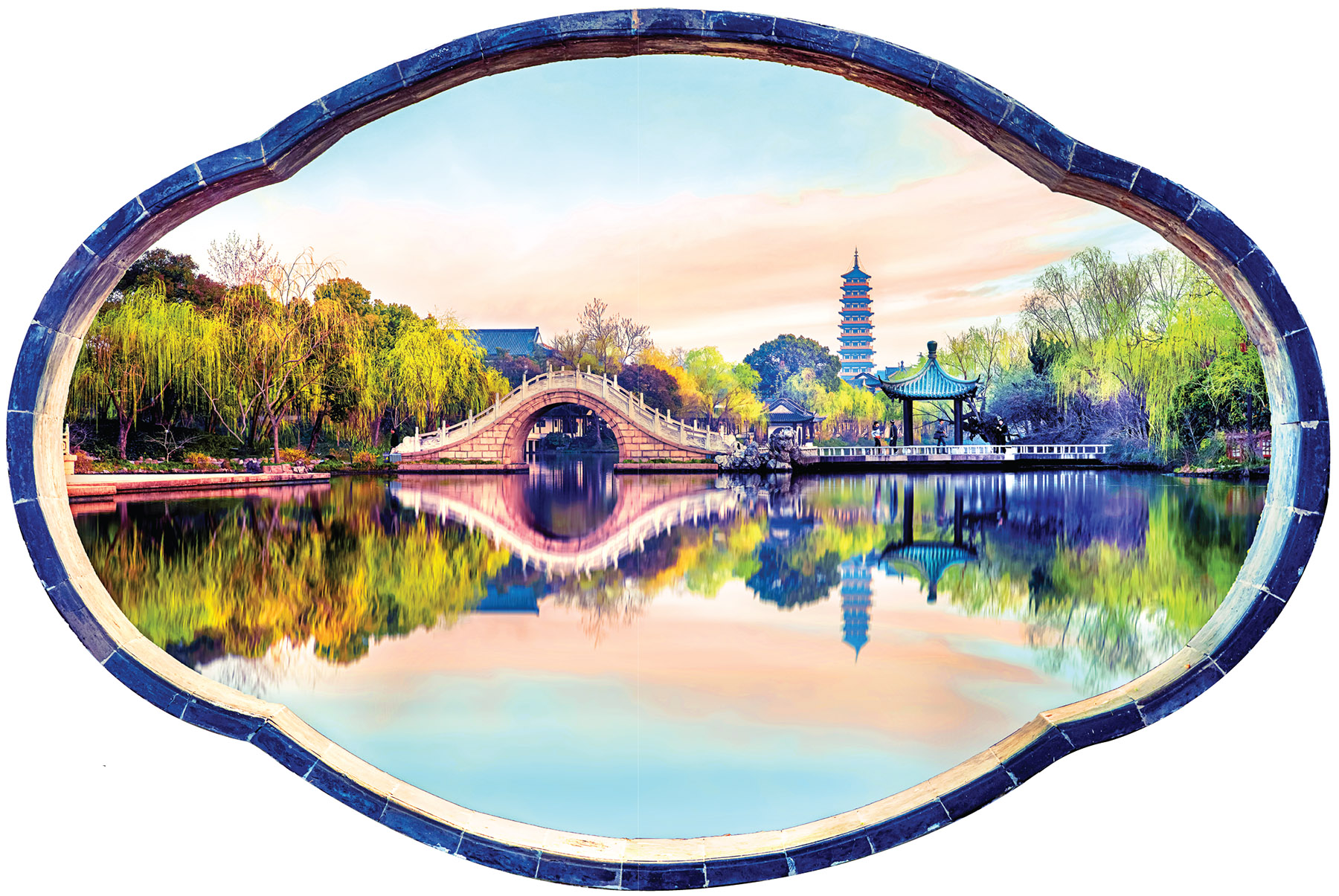
Over the course of history, the region along the southern bank of the lower reaches of the Yangtze River, which is known in China as Jiangnan, has been a haven for royals, government officials, prominent families and scholars, seeking refuge from war and chaos, and a place where they had established new dynasties, kicking off flourishing eras of literature and art.
Jiangnan's prosperity was propelled by the construction of the Grand Canal, which began in the Sui Dynasty (581-618) and reached its historical zenith during the Ming (1368-1644) and Qing (1644-1911) dynasties.
READ MORE: Verses evoke a golden era
The aesthetics and preferred entertainments of the ruling classes shaped Jiangnan, bequeathing the region a rich cultural heritage.
"Unless you enter the garden, how can you know spring's splendor?" Du Liniang asks famously in Ming playwright Tang Xianzu's classic legend, The Peony Pavilion. The fictitious heroine is the only daughter of an official during the early years of the Southern Song Dynasty (1127-1279). Her love affair begins during a stroll around her garden, a place where its owners escape from officialdom, appreciate nature, relax, think and dream.
Many Jiangnan cities still have ancient gardens, which represent the Chinese ideal of the harmonious coexistence of humans and nature.
At the heart of the Confucius Temple in Nanjing, Jiangsu province, which is part of the Qinhuai River Scenic Belt, is one of the Four Great Gardens of Jiangnan. The Zhanyuan Garden is around 600 years old and is the city's oldest surviving classical garden.
Its quintessential landscaping revolves around three elements: artificial hills, water features and scholar's rocks. The Zhanyuan Garden's triumphant rockery exemplifies the "mountains dominant, waters subordinate "philosophy of classical gardens.
Among its marvels is the Fan Pavilion — a bronze structure recognized as one of the world's earliest climate-controlled buildings, which made use of a heating system that was innovative in China of its time.

On snowy days, servants would burn charcoal inside the Western Artificial Hill and the heat would travel through pipes upward so that people in the pavilion would feel warm, according to an on-site guide surnamed Zhang.
In his satirical book Rulin Waishi (The Unofficial History of the Scholars), Qing novelist Wu Jingzi describes in Chapter 53 the grandson of Duke Xu Da, who helped Zhu Yuanzhang to overthrow the Yuan (1271-1368) government and establish the Ming Dynasty, enjoying a drink with his cousin while appreciating snow from the Fan Pavilion. Outside snowflakes fall, inside they have to take off their clothes because it is too hot.
One of the best times to visit the Zhanyuan Garden is at night during the spring, especially when accompanied by a good friend. At about 8 pm, an on-site guide shows small groups of visitors around the quiet, dimly-lit garden. If they are lucky, when they reach the platform outside the Zhuyue Lou (the "moon-chasing building"), visitors will be able to appreciate two moons: one in the sky and the other reflected in the small lake.
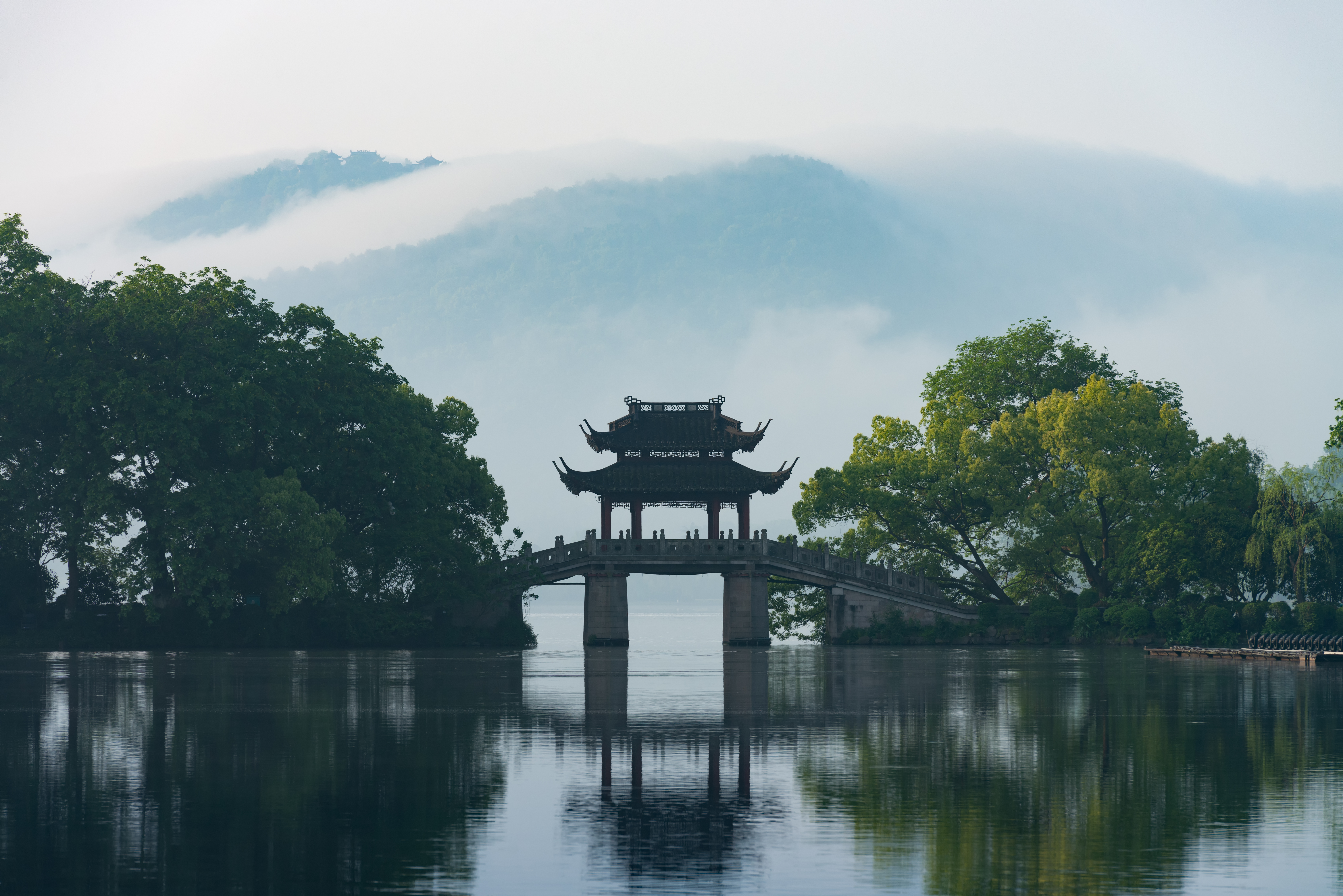
Sublime greenery
Apart from the Zhanyuan Garden, Jiangsu province offers a lot of attractions. In Yangzhou, it is possible to visit the well-preserved Geyuan and Heyuan gardens. In Wuxi, there is a garden favored by Qing Dynasty emperors Kangxi and Qianlong, the Jichang Garden. Emperor Qianlong loved it so much that he ordered a copy, the Xiequ Garden, to be planted in Beijing's Summer Palace.
Even on the spring day I visited, when the garden was packed with groups of tourists busy posing for photos and an army of noisy primary school students, it was still possible to find peace around the pool, thanks to the exquisite views.
A middle-aged man with a large camera told me that if I stood where a Chinese snowball tree was blooming, I could see the view for which the garden is famous. I did as he suggested and high above the canopy of the trees, I saw a pagoda on the opposite hill. The pagoda is an element the maker of the garden ingeniously borrowed to perfect the view.
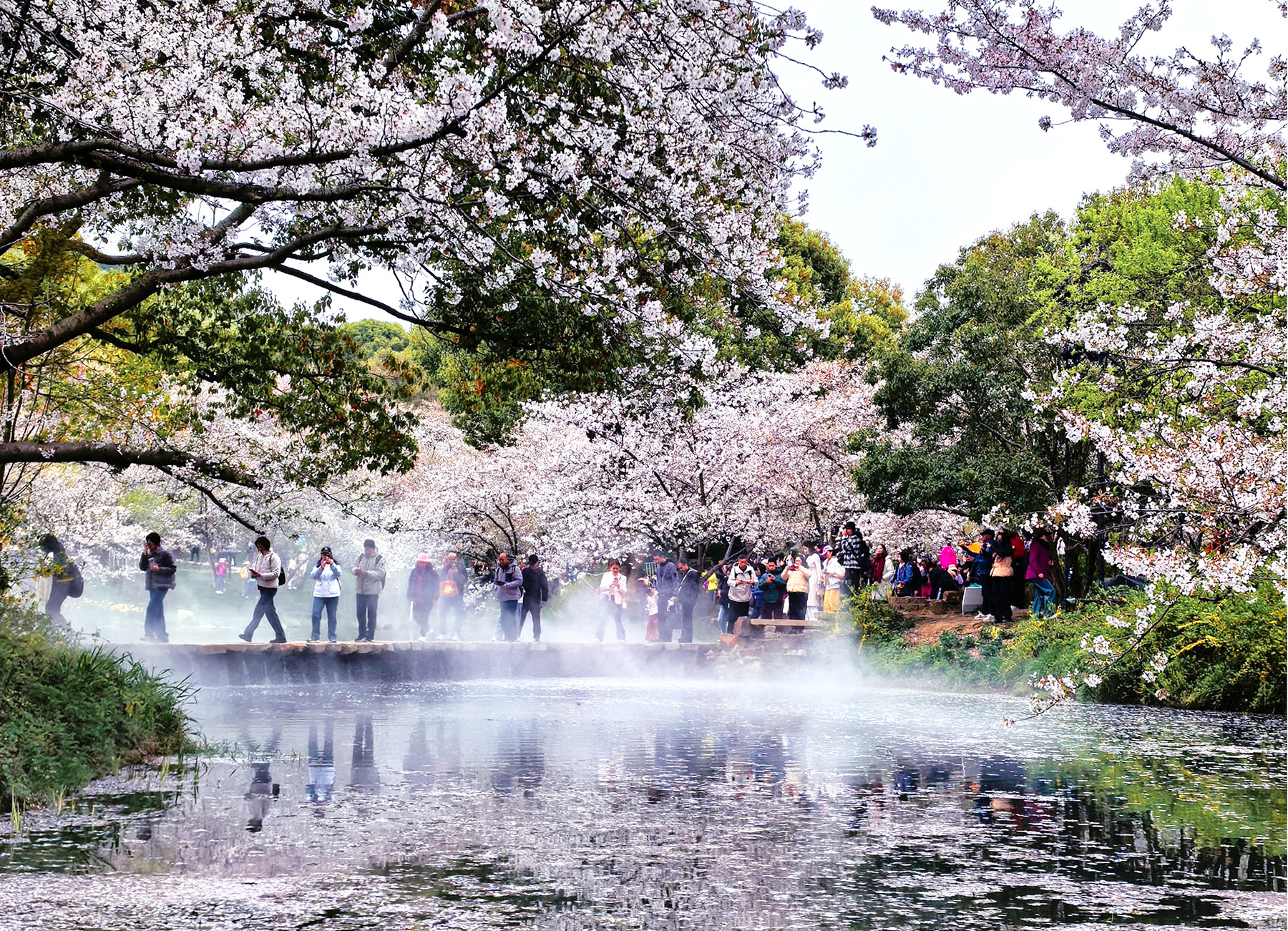
The ideal of a classical Chinese garden is to create the kind of visual pleasures that must appear to have already existed, as if created by the hand of nature, and even in the smallest garden, visitors can see the wider world. Each carefully laid-out garden is imbued with its owner's observations of the world and reflections on life.
One particular style, the Suzhou Garden, has produced some of the best in China. The four big private examples — the Pavilion of Surging Waves, the Lion Grove, the Humble Administrator's Garden, and the Lingering Garden — represent the landscaping philosophies of the Song (960-1279), Yuan, Ming and Qing dynasties, respectively.
For 41-year-old writer Deng Anqing, who moved to Suzhou from Beijing in 2021, the Pavilion of the Surging Waves is a favorite.
"Though small, it is exquisitely designed, ingeniously arranged, and displays a different charm with each passing season," he says.
If you want to see artificial hills, go to the Lion Grove and if you prefer water, then go to the Pavilion of Surging Waves. But if you want to see a real natural garden, you must go to the West Lake in Hangzhou, Zhejiang province.
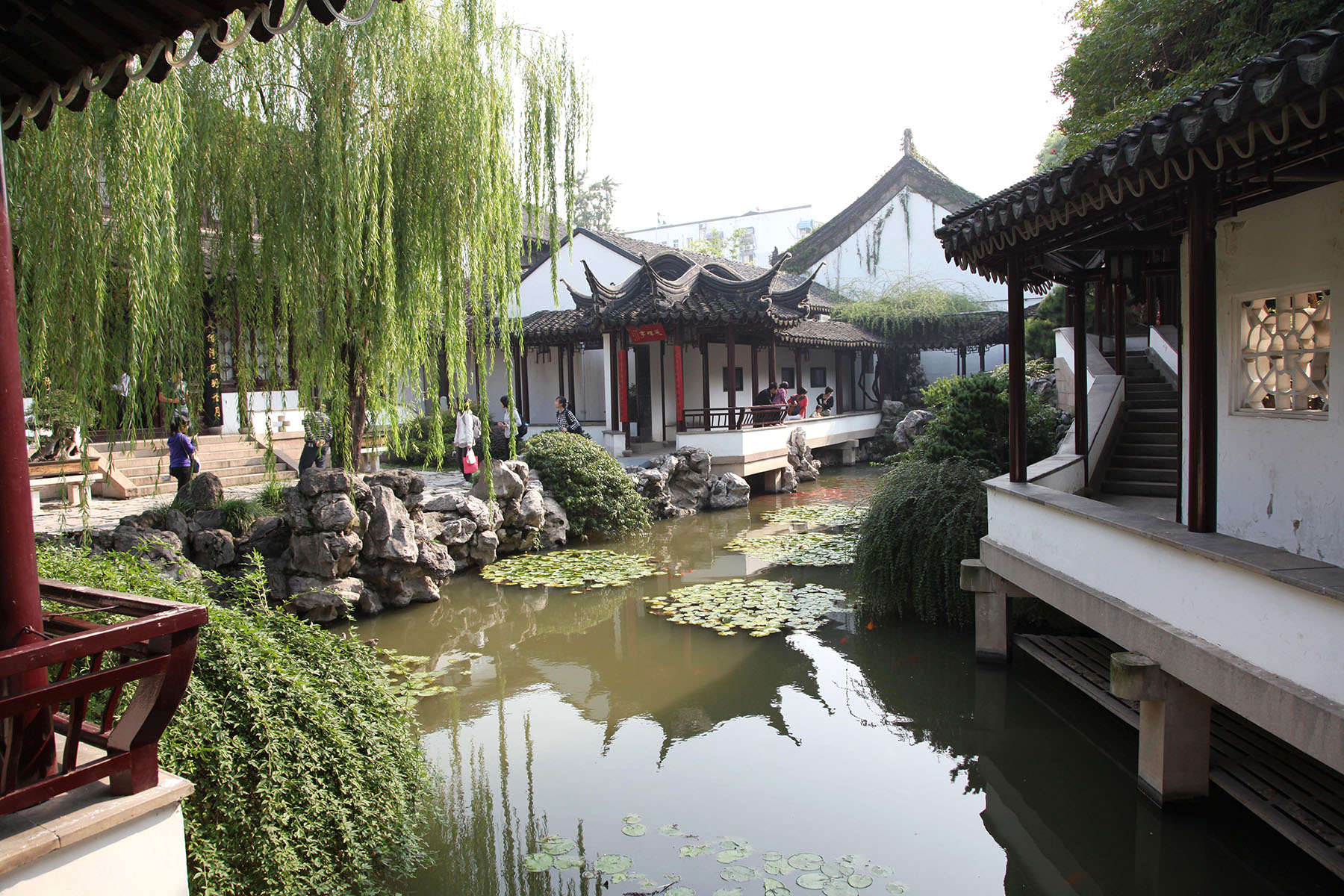
The great Song Dynasty poet Su Shi was appointed head of Hangzhou twice. During his second term in office, to resolve the environmental crisis the West Lake was then facing, he had the lake dredged and enlarged, built the nearly 3-kilometer-long Su Causeway using silt from the lake bed, connected the causeway with six single-arch stone bridges, and planted peach and willow along its length. This project from more than 1,000 years ago created the three famous West Lake views that are still appreciated today — Dawn on the Su Causeway in Spring, Three Pools Mirroring the Moon, and Misty Willows on the Six Bridges. A cultural landmark of what is today Hangzhou, the Su Causeway epitomizes a combination of water conservancy engineering, environmental treatment and landscaping.
In one of his odes to the West Lake, Su describes the different views during and after a spring rain:
"I'd like to compare West Lake to the Fair Lady West; Whether in light attire or heavily adorned, she shines her best."
It's better to visit the lake on a rainy day than on a sunny day, but it's even better to visit on a clear, moonlit night. Cloaked in winter's snow, however, West Lake reveals a grace no other season equals.

Ever-changing beauty
At dawn one April morning, I woke to the alarm because according to the forecast, it was going to rain in the West Lake area.
When I arrived, the rain was yet to fall and the air was cool. The West Lake was veiled in an early morning haze of misty blue. A fish jumped out of the water, flipping as if to greet me.
I walked about 4 km to a site on the list of the Ten Views of West Lake — Broken Bridge with Thawing Snow — before my left foot began to hurt badly.
There was, of course, no snow. Nor was the bridge broken. I forgot to go to the Su Causeway, where it would have been the perfect time to appreciate Dawn on the Su Causeway in Spring.
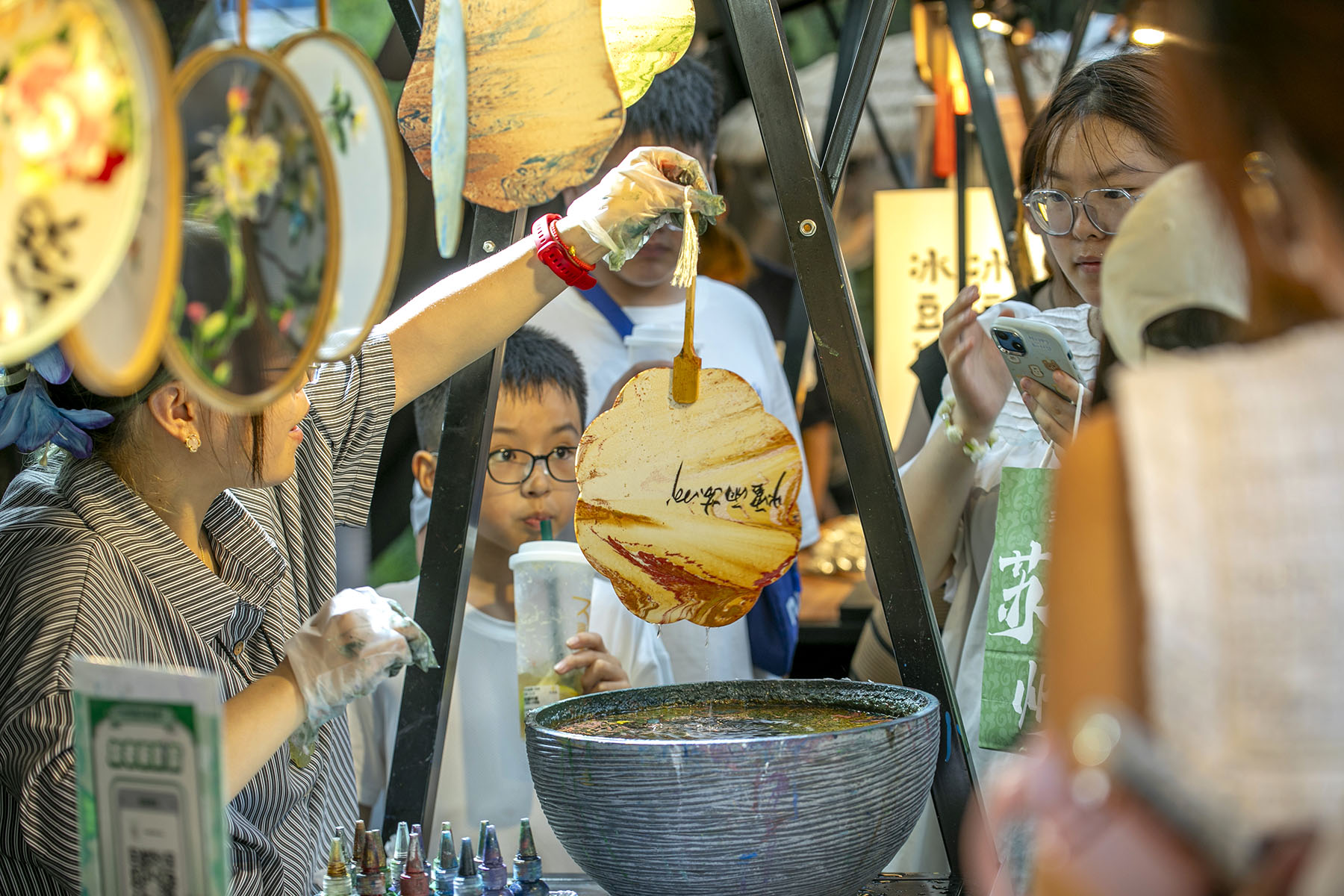
I checked the list, learning that to see all 10 views, one has to visit during all four seasons so as to see the willows wave, the lotus flowers, the autumn moon, and the thawing snow, as well as come at dawn, in the morning, at dusk, and in the evening to see the fair lake in different lighting.
But even strolling around the lake on a cool spring morning, joy filled my heart at the sight of such gorgeous views. I was metaphorically walking through a classical Chinese painting. If the West Lake is a masterpiece, I wanted to memorize every detail.
A middle-aged woman was walking along the Bai Causeway, playing a pop song on her tablet and singing along, bursting into laugher once in a while. It was strange, as most people enjoyed the views quietly, but even I wanted to join her in singing: "Let us journey through this worldly life together, live with abandon!"
The literati loved spots like the West Lake, a garden created by nature but shaped by human hands. It is similar to the views at Yuantouzhu, a peninsula on the northwestern shore of Taihu Lake in Wuxi.
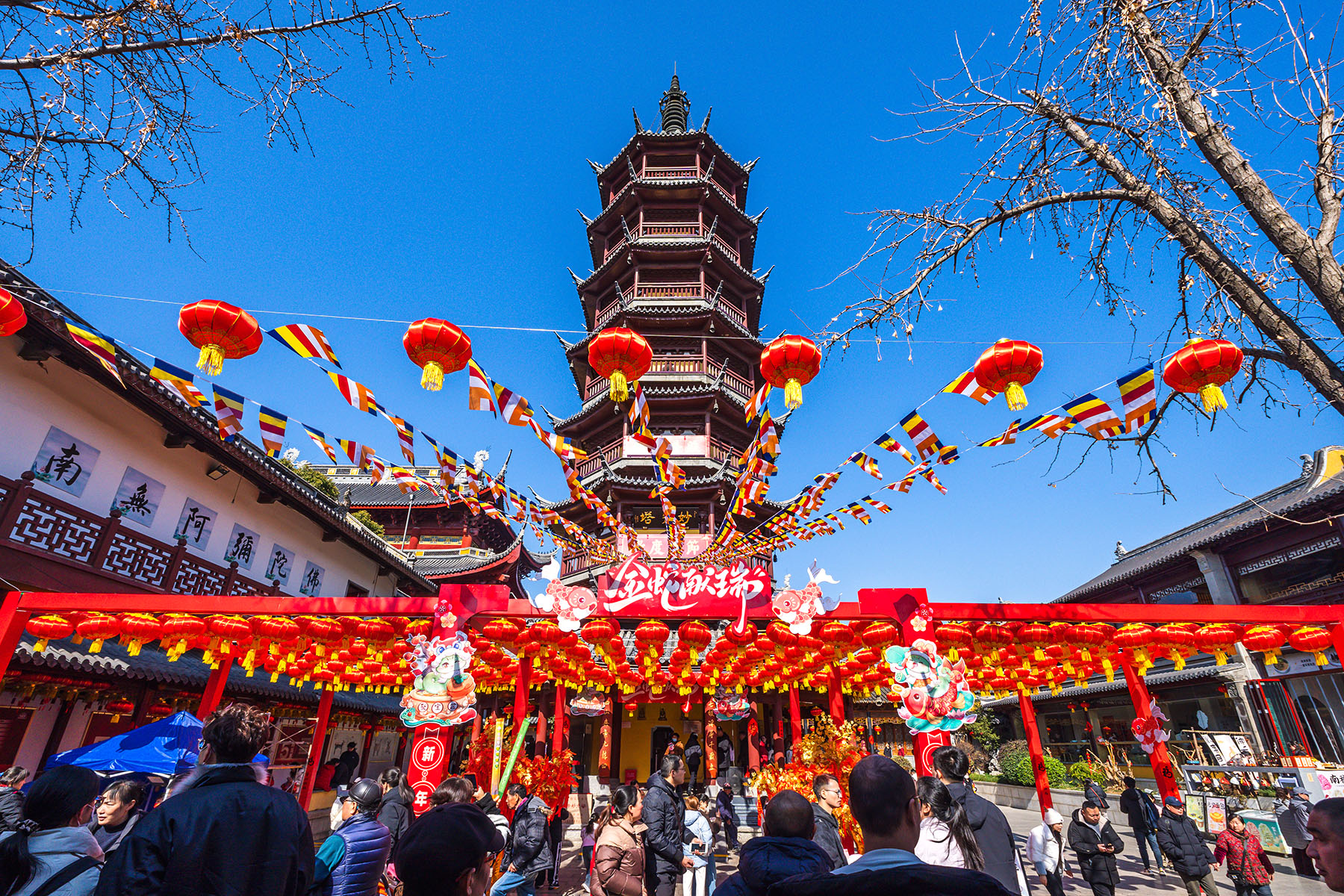
In Jiangnan, gardens are closely linked to Kunqu Opera, as demonstrated in The Peony Pavilion.
In his essay about the aesthetic connections between Chinese gardens and Kunqu Opera, renowned architect Chen Congzhou analyzed how the flourishing of Kunqu Opera in the Jiangnan region emerged simultaneously with — and remained inextricably linked to — the maturation of Chinese classical garden design during the mid-Ming Dynasty, concluding that "the differences lie merely in their forms of expression".
In other words, Kunqu Opera is a garden for the ears and a garden is Kunqu Opera for the eyes. The best place to see a Kunqu Opera is in a Chinese classical garden.
Sitting outside the Zhuyue Lou in the Zhanyuan Garden in the evening, it is possible to watch a film excerpt of the Kunqu Opera The Peony Pavilion projected using Holographic Laser Projection in the pavilion on a stone boat in the pool.
Elegant movements, delicate singing, the bright moon, cool wind and the beautiful garden will drive away any bad mood.
After sitting and watching for a while, my friend and I said almost simultaneously that the ancients really knew how to live — with such a splendid garden and captivating opera performance.
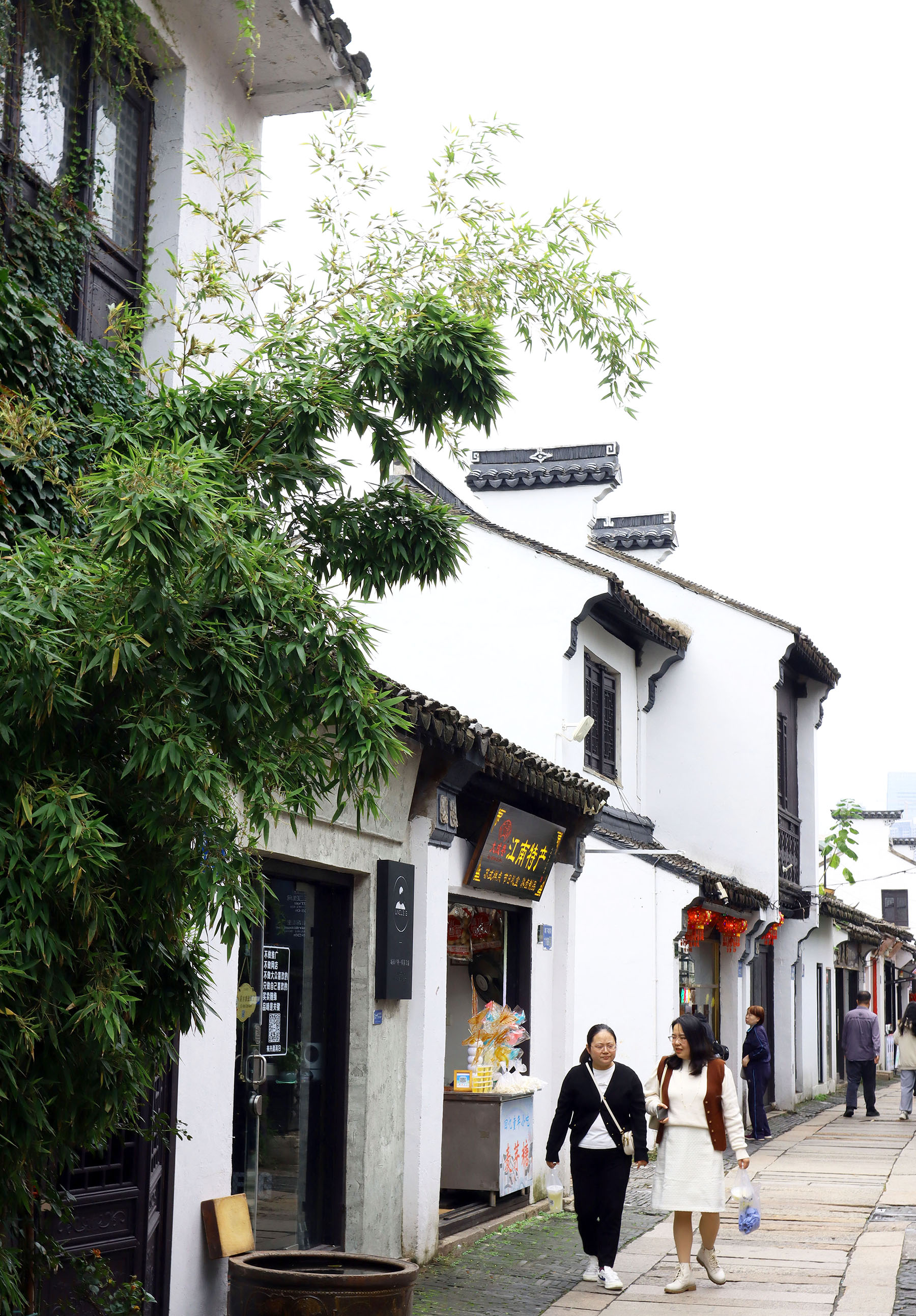
Kunqu Opera originated in Suzhou. Through the efforts of generations of artists, who worked on performance, stage design, costumes, music, scripts and libretti, it gradually became a highbrow art form favored by the ruling classes and the literati, and came to exert a deep influence on other regional operas.
The singing is intricate and ornate, the recitation refined and cultured, the performances marked by exquisite subtlety, and the dance imbued with ethereal grace. Coupled with its stage design, it occupies a pinnacle in traditional Chinese theater.
ALSO READ: Yangtze inspires with its power
Visiting the Humble Administrator's Garden one night, Deng, the writer who moved to Suzhou a few years ago, watched The Sweet Dream in the Garden, an excerpt from The Peony Pavilion.
"It's for tourists to get a glimpse of the classical art. But if you want to watch a Kunqu Opera, go to theaters like the one in the China Kunqu Opera Museum in Suzhou," he says.
Contact the writer at yangyangs@chinadaily.com.cn


